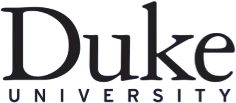Leadership AdvisoryExecutive Roles
What Is a COO and Why Every Growing Company Eventually Needs On
The modern corporation faces a paradox. Strategic vision has never been more celebrated. We lionize the disruptors, the innovators, and the big thinkers. Yet companies do not fail because they lack ideas. They fail because they cannot execute. They fail when customer orders arrive late, when quality slips, when costs rise, and when talented people leave. They fail in the space between presentation and profit, and that space is where the chief operating officer lives. Many leaders still ask what is a COO and how this leader turns plans into repeatable results. The content chief operating officer overview below provides a practical answer to that question.
The COO is the executive who transforms corporate ambition into operational reality. While the chief executive officer sets direction and speaks to investors, the chief operating officer COO turns promises into products and strategies into systems. This is not about being number two. It is about being the one person who can look across every function, every process, and every metric, then orchestrate them into a whole that works.
As companies scale beyond founder control and reach true complexity with multiple products and global operations, a clear pattern appears. Firms that grow do more than design sound company strategies. They put an operator in the seat who makes those strategies breathe through day to day operations and steady delivery, quarter after quarter. That is the heart of executive leadership in practice.
The Core Responsibilities of the Chief Operating Officer
The chief operating officer oversees the organization’s daily operations and keeps the company’s operations running smoothly. Reporting to the chief executive, the COO role spans human resources, finance, supply chain, procurement, production, technology, sales operations, and customer success. The COO job description will vary depending on industry and stage, yet several duties appear in nearly every business. For example, if the company sees a sudden drop in market share or a quality issue, the COO acts quickly, coordinates managing departments, and restores performance through actionable steps that meet objectives.
Operational Systems and Performance Management
A strong COO sets the operating rhythm that ties plans to delivery. Weekly and monthly reviews keep leaders honest about progress, risks, and decisions. Clear inputs and clear outputs make these reviews useful rather than routine. The COO also aligns the management team so priorities, budgets, and staffing reflect company strategies approved in board meetings. This reduces the common trap of each function running its own plan.
The COO standardizes operational functions such as planning, quality, safety, service, and fulfillment. Standard does not mean rigid. It means the company uses shared data and repeatable steps so work moves faster with fewer errors. Handoffs tighten, cycle times fall, and customers feel better reliability. Lower defect rates and shorter wait times become visible proof of operational excellence.
Performance must be measurable and timely. Use a short list of performance metrics that predict outcomes, and apply monitoring metrics through simple dashboards. Leaders can course correct before problems grow. Ethical practice matters here. Haldren advises clients to protect privacy and limit sensitive data in internal operations while keeping reports transparent and auditable.
Supply chain and service are central in many industries. The COO strengthens supplier reliability, inventory rules, and fulfillment methods. Disruptions from weather, cyber events, or geopolitical shocks can ripple across a network. A prepared company keeps clear playbooks, secondary sources, and direct customer updates. The COO role keeps those plans current and tests them so the organization’s daily operations remain steady.
Strategic Planning and Resource Allocation
The COO translates long-range goals into steps, milestones, and budgets. This is where strategic objectives become real for teams. Many COOs use OKRs or scorecards to keep focus and track progress. The tools help only when they connect goals to funding, headcount, and timelines. The COO removes conflicts early so programs do not stall.
Wise spending decisions support operations management and business strategy. The COO evaluates capital investments, returns, and risks, and guides asset management for plants, fleets, software, and data platforms. Every decision ties money to throughput, quality, service, cash, and company goals. Good capital choices help the company grow without waste. Weak choices create fixed costs that are hard to unwind.
Leadership and Team Development
The COO builds a cohesive leadership team, coaches senior management, and develops leaders who solve problems quickly and raise risks early. Calm decisions under pressure and the ability to motivate teams signal strong leadership skills. COOs move from boardroom to shop floor and into virtual rooms with global teams. That range builds trust at every level and across other senior leaders. Managing teams through change and growth is a core part of the job.
Culture matters because the COO shapes how work gets done. Meeting rhythms, planning habits, and follow through create a work environment people can count on. A strong COO sets clear standards and models ownership. Company culture strengthens when expectations are clear and people see consistent follow through. The focus stays on fixing processes and learning rather than blame. Good governance lives here as well. The COO reports on operations, risk, and major programs, and keeps other stakeholders aligned by making trade offs visible and honoring commitments. Clear reporting supports corporate governance without pulling the board into day to day operations.
The COO vs. CEO: Strategy and Execution in Partnership
The strongest companies make the split between chief executive officer and chief operating officer clear. The chief executive focuses on strategy, markets, investors, and external alliances. The COO ensures ideas can be executed with discipline and measured outcomes. The two jobs differ, yet they remain tightly connected, which keeps the c-suite executives aligned.
Classic research describes several COO models. The Executor sharpens delivery and keeps commitments. The Change Agent leads a turnaround or a major shift. The Partner complements a founder with operational depth. The Heir Apparent blends delivery with enterprise range and may step into the CEO role. Naming the model early clarifies the mandate and avoids confusion. Many COOs typically rise to the top job in large enterprises, which reflects trust in operators who have run complex business operations under pressure.
Trust sits at the center of the partnership. The CEO must trust the COO to run operations without constant supervision. The COO must trust the CEO to hold the line on priorities so teams do not thrash between projects. When trust runs high, decisions speed up and issues stay small. That clarity helps the wider management team understand who sets direction and who turns that direction into action.
Measuring Success
An effective COO makes performance visible and fixable. The scorecard design matters because teams need clear sight lines into what drives results and where to act. Show what matters most, assign each metric to an owner, review results on a steady cadence, and choose corrective actions that are small enough to start this week and large enough to move the number.
The strongest scorecards cover five dimensions:
- Service and Quality: Are measured by customer satisfaction scores, defect rates, first-pass yield, and service level agreements.
- Throughput and Speed: Cycle time, on-time delivery, order fulfillment rates, and lead times are key metrics used to measure throughput and speed.
- Cost and Productivity: Cost-to-serve, labor productivity, operational efficiency ratios, and unit economics can be used to measure costs and productivity.
- Capital and Cash: Data points like the cash conversion cycle, inventory turns, and return on investment track how efficiently a company turns investment and inventory into cash and profit.
- People: Factors like employee retention and team engagement scores reflect workforce stability, productivity, safety, and engagement.
Monitoring should be timely and simple with one source of truth for key data. When results slip, the COO helps diagnose root causes and set actionable steps. When results improve, teams lock in new methods so gains last. Data and AI help with forecasting, scheduling, and customer signals. They serve the scorecard rather than replace it, and they drive measurable improvements that meet objectives.
The Modern COO’s Expanding Influence
The scope of the COO position has widened over the past decade. Beyond internal efficiency, COOs typically lead change in digital tools, data, and AI while coaching executives in simpler and faster ways of working. Many set a short COO agenda tied to business strategy with a few measurable outcomes and clear communication from frontline to board. That approach helps the company finish the few programs that matter most and keeps operational excellence in view.
Global Operations and Supply Chain Resilience
Factories, suppliers, service hubs, and partners now span regions. The COO reassesses network footprints, balances cost and service, and manages risk across countries. Some firms reshore or friend shore when a single region creates excessive exposure. The right answer will vary depending on industry, yet the analysis is the same. Protect customers while managing cost and cash with discipline.
Shocks still arrive from cyber events, extreme weather, and transport failures. The COO strengthens continuity with better visibility, clear escalation, and tested backup options. This is not about stockpiling across every site. It is about deciding where buffers pay off, then revisiting those choices as conditions change.
Capital Allocation Discipline
Automation, capacity relief, and data platforms can improve service and reduce unit cost when chosen well. The COO ties capital to the P&L and free cash flow rather than volume alone. Stage gates, sensible payback targets, and clear owners keep programs honest. When a project misses its case, the COO adjusts scope or stops it. The COO’s remit often includes integrating and delivering products such as software, hardware, or managed services, which supports driving growth and healthy margins.
Talent Pipeline and Decision Rights
The COO breaks silos, speeds decisions, and pushes accountability deeper into operations. That work includes simpler priorities, fewer approval layers, and recognition for people who solve customer problems. The pipeline matters. Vice president roles and senior vice president roles that run major pieces of the business prepare future COOs and, in some cases, the future chief executive officer CEO. Haldren coaches hiring teams to use structured interviews, practical work samples, and clear decision rights so leadership roles are filled on skill and values. These methods are ethical, privacy conscious, and transparent by design.
Examples help. Apple’s former COO became CEO after years leading day to day operations and building a supply chain admired for scale, quality, and reliability. Oracle’s former COO and executive vice president strengthened sales discipline and operations during a long growth run. These cases show how a well defined COO role, backed by clear authority and trust with the CEO, can lift a company for years and produce successful COOs who can be an heir apparent when boards need continuity.
Qualifications and Experience That Define a Successful COO
Most COOs hold a bachelor’s degree in business administration, engineering, finance, or a related field, and many add a master’s degree. Certifications in lean, Six Sigma, project leadership, or supply chain help, yet outcomes matter more than badges. The typical path includes roles such as operations director, plant general manager, vice president of Operations, senior vice president of Operations, or executive vice president with broad P&L scope. Many leaders spend time in product or commercial posts so they can balance service and cost with demand signals.
The chief operations officer needs extensive experience and a deep understanding of systems. Capacity models, service levels, cost trees, and throughput should feel familiar. Leadership skills and soft skills matter just as much. Calm judgment, clear standards, and the ability to motivate teams across functions drive results. Evidence based management is non negotiable. The modern COO is fluent in data, knows which performance metrics predict outcomes, and builds simple tools people use. Compensation varies by company size and industry, and the average salary can differ widely. Packages align pay with long term performance so operators stay focused on value.
Haldren brings an advisory view shaped by years supporting operators and senior leaders. We share practical playbooks, contribute to industry discussions, and help clients build ethical practices that protect confidentiality. We also recognize counterpoints. Not every company needs a COO at every stage, and some mandates fail when scope is unclear. The right answer depends on scale, risk, and the maturity of internal operations.
For Boards and Future COOs: The Path Forward
For any company seeking durable performance, the COO is not a seat for a figurehead. This is a co architect of value who keeps the business close to customers, close to facts, and close to the truth about capacity and timing.
If you are a CEO or board member, clarify the mandate. Decide which COO model you need and write a COO job description that leaves no doubt. Set the operating rhythm so reviews and board updates follow a steady pattern. Tie capital investments to service and cash outcomes. Build a pipeline through vice president and senior vice president roles that can grow into the COO position. Your next chief executive may come from this track.
If you are preparing for the COO role, build range. Learn finance well enough to guide capital choices. Learn supply chain and service so you can protect customers during stress. Learn technology well enough to sponsor data and automation that shorten cycle time and improve quality. Practice leadership skills that make people stronger under pressure. The company will remember how you showed up when the stakes were high.
With the right remit, talent, and scorecard, the chief operating officer helps the company meet objectives with steady, well run operations. That steadiness rarely makes headlines, yet it compounds over time. The result is a company that keeps its promises to customers, employees, investors, and communities, and a COO position that remains highly valued by those who rely on it.






















